The activity-based workplace: An efficient and flexible use of space
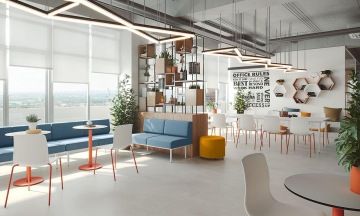
An activity-based workplace is an increasingly popular trend in office work. In principle, it's an office layout where, instead of one allocated seat, employees move to different zones depending on what activities they are doing over the course of the day. Everyone can choose the environment that currently suits them best. Let's take a closer look at the activity-based workplace and find out why this approach is so popular.
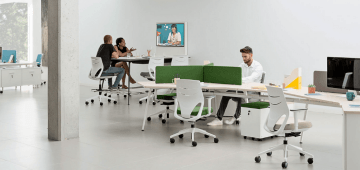
What makes
a workplace
activity-based?
Each room and zone in an activity-based workplace must immediately express the purpose for which it is used. Merely dividing the space into several parts will not automatically make a workplace activity-based. The room's furnishings and visual design play a crucial role. Imagine that during the day you need to handle several different common work tasks, such as writing a report, calling a potential customer or brainstorming with colleagues. In a traditional office, everything would take place at one desk or in a conference room.
In an activity-based workplace, you have more choice:
- Because writing an important report requires a high degree of concentration, you can do it in soundproof focus room, where you will have maximum peace and quiet to work.
- A call with a customer will go much more smoothly if you are not disturbed by the hustle and bustle of the office. An acoustically isolated telephone booth offers you peace and privacy.
- Environment has a huge influence on our creativity. Instead of a dull conference room, colleagues can assemble in a playful relaxation zone with various types of seating and tools to stir up the imagination. Or maybe in a booth arranged like a restaurant table next to the kitchen.
Focus room
Telephone booth
Zones for employees
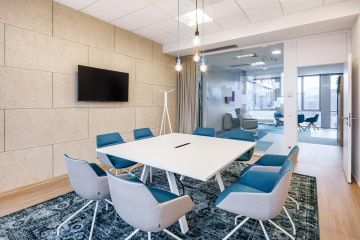
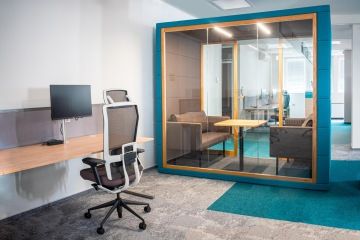
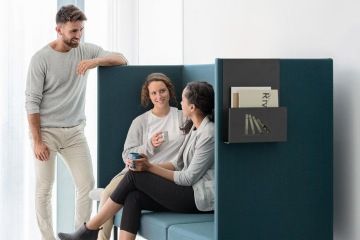
The benefits of an activity-based design
The main goal of the activity-based workplace is to support employee productivity. While this approach may not suit everyone, research has shown that many people value or prefer an activity-based approach.
- In their study of the activity-based workplace, Dutch researchers Susan Smulders and Denise Clarijs found that more than 70% of respondents felt that this approach to work made them more productive.
- Over 60% of respondents in the same study also reported having higher energy levels in the activity-based workplace.
From the employer's point of view, it is important not only to increase employee productivity but also to save costs and use the space more efficiently.
- After implementing an activity-based approach, British company Nationak Grid was able to save almost GBP 10 million a year (and increase employee productivity by 8%).
- According to a Leesman survey, 81% of employees working in companies with activity-based offices consider the company's culture to be open and flexible. This increases the long-term loyalty of these employees.
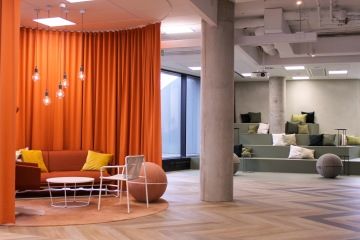
Elements that fit into a flexible office
Not every office can be adjusted according to activity-based principles. If the corporate culture in a certain field prefers tradition, maintaining a more rigid office face may be more advantageous. But times are changing fast, and millennials and Generation Z are deconstructing the idea of the traditional workspace.
So, what can we find in an activity-based workplace? While each space and company is unique and it is difficult to generalize, we often encounter:
- Soundproof booths designed for telephone conversations or work requiring the utmost concentration.
- Relaxation zones designed for active or passive rest, equipped with the most comfortable seating, entertainment facilities and interiors to help employees recharge.
- Spaces specially designed for informal meetings of colleagues, where ideas can flow freely.
- Company libraries, where employees can research a selected problem or field.
- Client zones that represent the company's values and provide enough privacy for meeting customers or business partners.
- Kitchens designed to stimulate social events in the office and provide everything needed for refreshments during the day.
And many other elements that depend on the corporate culture and the space in which the activity-based workplace is located. The office should always be designed in a way that reflects the real needs of employees.
Relaxation zone
Client zone
Kitchen zone
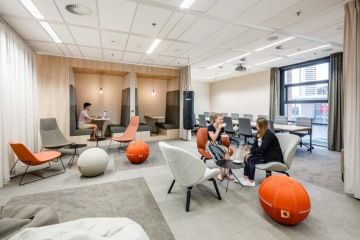
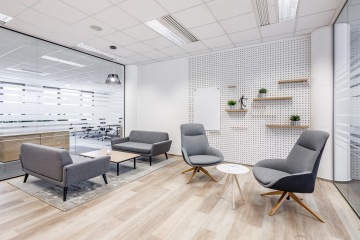
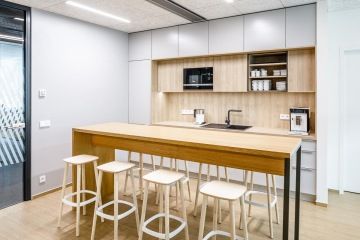
Problems companies face when implementing an activity-based approach
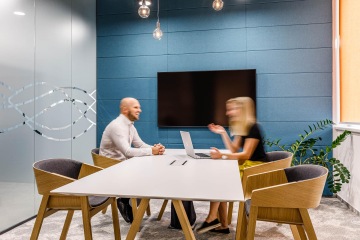
It takes time
The way the office is perceived cannot change overnight. First, it is necessary to get plenty of feedback from employees so that their productivity increases rather than decreases. The number of job positions must also be considered. An undersized activity-based workplace does not work well.

and choice
People should have a choice. Being forced to work in the kitchen because all the desks are occupied goes against the activity-based philosophy. It is also a good idea to think about the needs of both extroverted and introverted employees and to provide plenty of quiet places and space for meetings.
The experts from the CAPEXUS team will be happy to help you use your office space efficiently and flexibly. We design and create unique office interiors.
Photo authors: Petr Andrlík, Martina Prášková, Actiu
Published: April 6, 2021